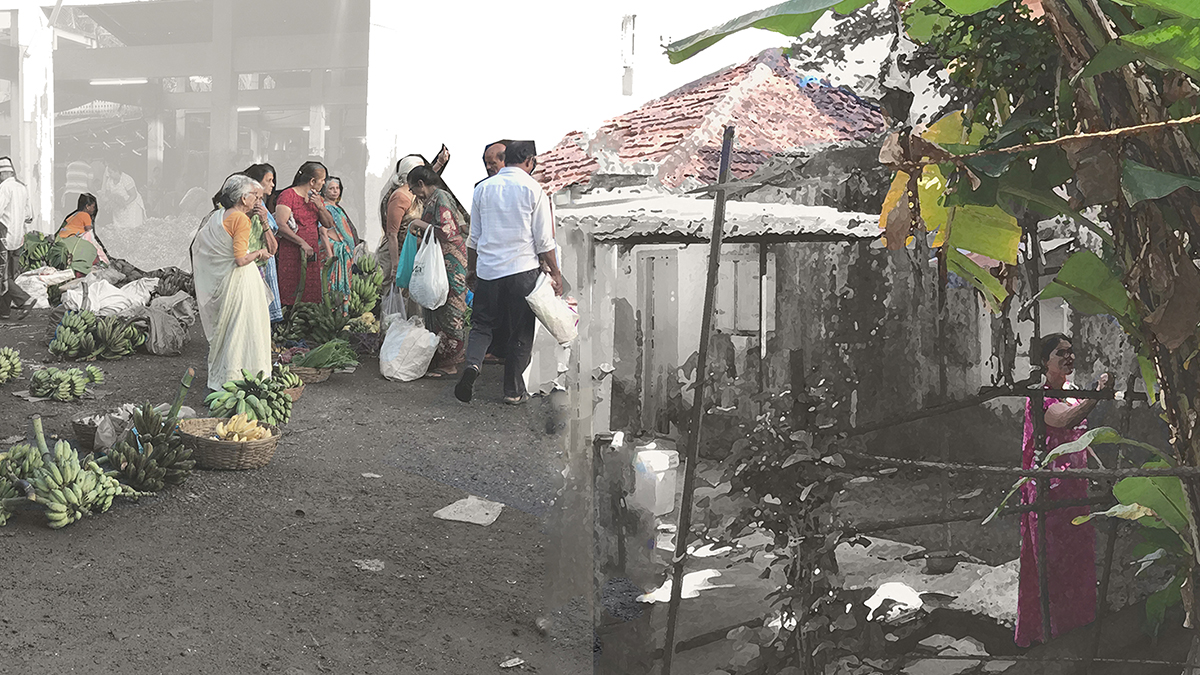Design Dissertation: Shriya Vartak
Guide: Vinit Mirkar
Agriculture is the main occupation of the majority populace. The value for agricultural produce depends on the demand and market value. In today’s time, the field of agriculture is experiencing a gradual decrease. Poor handlings, inflation, less opportunities for post processing, improper disposal of agriculture waste, etc. are certain factors that affect the value of agricultural produce. In order to increase the value of the produce, it is important to think of alternatives for the same. Agro industries provide a means of converting raw agricultural materials into value added products while generating income, providing employment and contributing to overall economic development.
Banana is an important fruit crop in India. Usually coconut tree is referred to as ‘Kalpavruksha’ as every part of it is useful in one way or the other but banana plant could also be referred to ‘Kalpavruksha’ as every part of the plant including its stem could be used in multiple ways. The plant is made up of pseudo-stem (‘pseudo’, because it’s made up of leaves and not woody tissues), leaves, fruit, male flower and suckers (sapling like plants that grow besides the parent plant during its growth cycle). One banana plant takes about 9-10 months to completely grow and after each harvest, the plant is supposed to be cut from its bottom as one plant can bear only one bunch of fruit. After chopping off the plant from its bottom, the bunch of fruit, male flower and suckers are sold in market whereas the pseudo stem is burnt in the field. This degrades the soil quality and is also harmful for the environment. Leaves are either sold depending on the demand, used for mulching or thrown away. If all these parts are efficiently utilized for value addition, it will prove to be beneficial for the environment as well as be economically beneficial for the people in the fruit growing region.
In peri-urban areas, as people look for better job opportunities in the immediate city, a gradual decline in agriculture is majorly observed. In such areas, an increase in agro industries could play a major role in preserving the farmlands as well as generate extra income for the farmers. Along with creating employment opportunities, it will be equally beneficial for the region for giving it an identity. Usually, the value of agriculture commodity depends on its demand and market value. With this uncertainty, people in peri-urban areas tend to give away their land to developers and shift to permanent jobs. With an agro industry, the uncertainty factor decreases as it functions on constant input.
On the basis of the research, Vasai was chosen to be the site for this program. Banana is commercially cultivated in Vasai and Palghar region. It is cultivated in 911 hectares, mainly concentrated in the west. In one-hectare irrigated farm, almost 2000-2500 banana plants are planted. Vasai has been known for its banana production since the 19th century. During this time, the goods were exported to Mumbai, Pune, Ahmedabad and Punjab. The identity of Vasai then, was its banana production. Later, because of factors such as harsh weather conditions and degradation in the soil quality, this production experienced a gradual downfall. People shifted from banana farming to full time corporate jobs as it gave more income. In order to retrieve its identity, an agro industry can act as catalyst.
This dissertation is an exploration of how an architectural intervention could give a platform for value addition chain by taking into consideration the government policies and proposals for the same. It also aims at creating a zero-waste module, which is the need of the hour; where every input in the industry is put to some use without generating agro-waste. Agro-tourism is one more factor that helps uplifting an agro industry. It helps in creating awareness of the regional produce, involves more people in the chain and provides market for the commodity/product.









